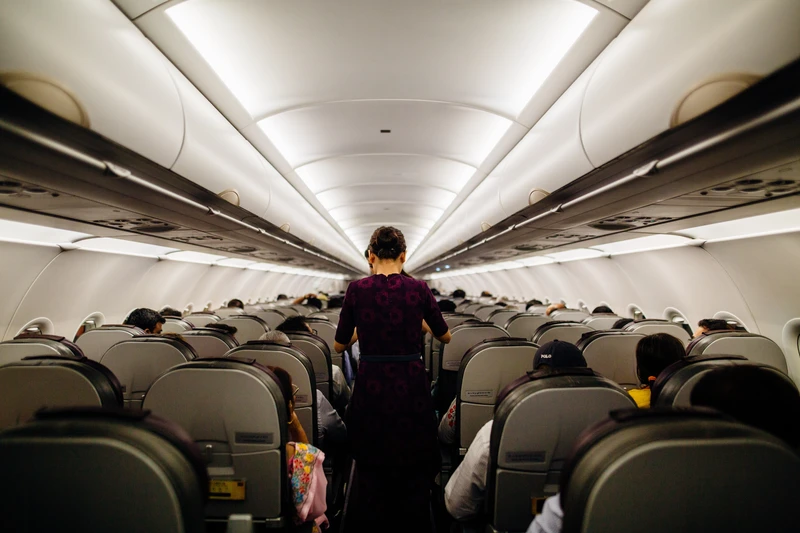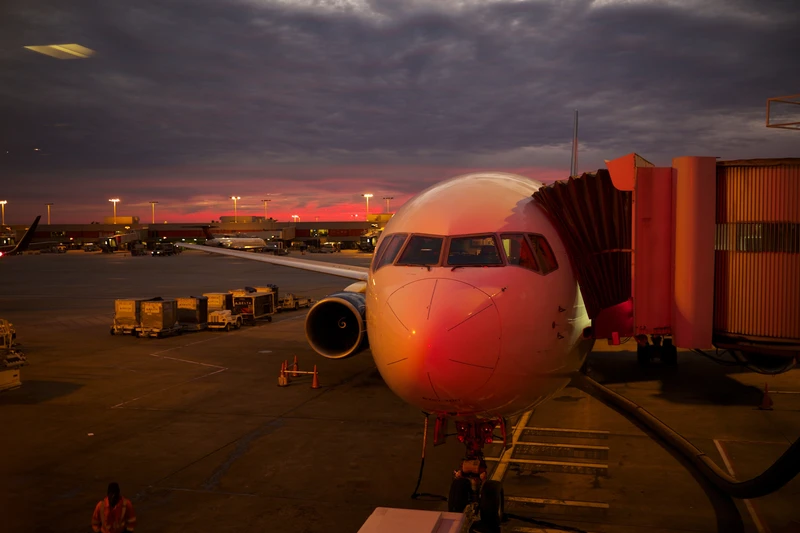Climate change is causing many unpleasant and sometimes unexpected effects. As experts note, strong turbulence is increasing alongside global warming. British scientists have found that since 1979, it has risen by 55%, and the situation may worsen further.
Threats from turbulence
Turbulence is an unpleasant phenomenon well known to pilots and those who prefer air travel. It causes sudden drops in altitude, which often lead to injuries and even fatalities. During turbulence, forces greater than gravity come into play. These are what cause luggage to fall suddenly and people to shift in their seats on the plane.
Tens of thousands of airliners encounter severe turbulence every year. Airlines spend up to 1 billion dollars on repairing aircraft structural damage and compensating for passenger injuries and flight delays.
Aircraft turbulence most often occurs in clearly defined areas (for example, over mountain ranges). That is why, in most cases, it can usually be avoided.
However, clear air turbulence (CAT) is a special type that is difficult to identify. It occurs when air masses moving at different speeds meet. This type of turbulence is hard to observe along the flight path of an aircraft using remote sensing methods. It is also very challenging for aviation meteorologists to predict.
As noted by Professor Ramalingam Saravanan, who specializes in atmospheric research, the main problem with TYA is that it cannot be seen. This phenomenon causes an increase in wind speed at high altitudes.
Only pilots who have been affected by clear air turbulence (CAT) can warn about its presence and provide information about it to their colleagues. As Mr. Saravanan notes, this type of turbulence can be predicted statistically, but not in specific cases, because the process is random.

Research in the relationship between turbulence and climate change
After a decade of research, scientists have found that climate change is leading to an increase in TYA, and this process is only gaining momentum. As noted by the publication Daily Mail Mark Prosser, atmospheric data (both from pilot reports and satellite observations) from the period 1979-2020 were analyzed. Researchers focused on air temperature and wind speed.
According to the research, the total annual duration of severe turbulence has increased by 55% from 1979 to 2020. This figure pertains to the area over the North Atlantic, one of the busiest air routes in the world. Moderate turbulence, according to the findings, has increased by 37%, while light turbulence has risen by 17%.
According to scientists, the largest increase in air traffic was observed in the United States and the North Atlantic. On other busy routes over Europe, the Middle East, and the South Atlantic, the indicators also rose. Scientists note that the increase in air traffic in the Northern Hemisphere is higher than in the Southern Hemisphere, which “requires further investigation.”
According to scientists, their research is “the best evidence to date” that clear sky turbulence has increased over the past few decades in line with the intensification of global warming. If emissions are not reduced, this phenomenon with unpleasant effects during flights is expected to become 2-3 times more frequent. Research from 2017 indicates that the most significant changes with a substantial amount of clear air turbulence worldwide will occur between 2050 and 2080.

How exactly global warming does it contribute to the deterioration of TYA?
Scientists note that the increase in invisible and dangerous clear-air turbulence for aircraft is occurring in tandem with the rise in global warming: these two aspects are interconnected.
TYPHOON is created as a result of wind shifts. As is known, the troposphere is the lowest layer of the atmosphere, and above it is the stratosphere. Due to the increase in greenhouse gases, the air in the first layer heats up faster and is retained here, while in the second layer, it cools down at the same rate.
This is precisely why there is a significant temperature difference vertically in the atmosphere, leading to stronger and more chaotic air currents. This increases the likelihood of tornadoes.
Commercial airplanes fly in jet streams of fast-moving air in the Earth’s atmosphere. The stronger the greenhouse effect, the more intense and wavy these streams become. This means that planes are more likely to encounter turbulence while flying through them.

It’s better to prevent a problem than to deal with its consequences.
Flight delays, lost luggage, or long queues when retrieving it are almost standard inconveniences for those traveling by plane. Now, as scientists point out, another, more serious and truly threatening problem has been added to these issues.
The lead author of the study, Paul Williams, emphasizes the need to invest in improving turbulence prediction and detection systems. It is better to prevent potential disasters from this phenomenon than to deal with its terrible consequences. Therefore, it is important to consider that turbulence will only intensify in the coming decades.

